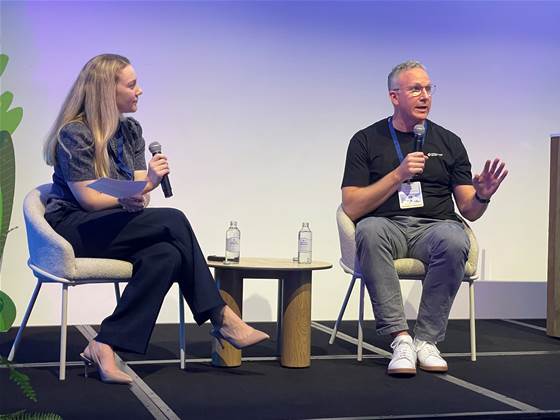Macquarie BFS Prepares Employees to Integrate AI Agents into Everyday Activities
We independently review everything we recommend. When you buy through our links, we may earn a commission which is paid directly to our Australia-based writers, editors, and support staff. Thank you for your support!
Quick Overview
- Macquarie BFS is equipping its employees for the widespread integration of AI agents throughout the company.
- Five to six AI agent proof-of-concept projects are currently in progress to enhance productivity.
- Training in prompt engineering has been initiated to facilitate AI integration among staff.
- Slack acts as the “digital headquarters” for communication and automation within BFS.
- Collaborations with Jira, Atlassian, Microsoft, and Salesforce are reshaping workflows.
- BFS is prioritizing high-value AI applications and strategic technology alliances.
- Company-wide AI initiatives, such as AI-enhanced search, are actively being explored.

Adopting Agentic AI: Macquarie BFS’s Upcoming Productivity Challenge
Macquarie Banking and Financial Services (BFS) is embracing a proactive strategy for AI transformation, effectively preparing its workforce to engage with AI agents. These self-sufficient digital assistants are being tested across BFS operations with the aim of minimizing administrative duties while unlocking greater productivity.
As stated by Shaun Kamler, head of the control tower at BFS, the organization already has five to six AI agent proof-of-concept (POC) initiatives underway. These agents aim to automate repetitive tasks, allowing employees to dedicate their efforts to more strategic and valuable activities.
“We believe this will unlock the next level of productivity,” Kamler remarked at a recent financial services summit organized by Agentforce. “Teams will need to modify how they operate and communicate to maximize AI effectiveness.”
Training for the AI Age: Prompt Engineering on a Larger Scale
To prepare its workforce for this new age, BFS has introduced prompt engineering training—an essential capability for interacting with generative AI systems. This training aids staff in effectively structuring queries and inputs so that AI agents can understand and execute them properly.
Kamler highlighted the significance of rendering AI outputs “agent-ready,” cautioning that inadequately structured content dispersed across platforms like Confluence could result in AI misinterpretations or errors. “We’re aiming to democratize this capability throughout the organization,” he added.
Slack: The Central Hub Revolutionizing Workflows
Slack has become a crucial component of BFS’s digital strategy, functioning as a central hub for communication, incident management, and automated workflows. Kamler characterized Slack as the “digital headquarters” where employees can retrieve vital information and smoothly transition to action across integrated platforms.
For instance, BFS has established a public Slack channel for incident management, permitting anyone in the organization to track and respond to system issues in real time. Integrations with Atlassian’s Jira and Microsoft tools further empower teams to operate more effectively across various platforms.
However, not all integrations have been successful—an initiative to manage leave approvals via Slack did not resonate, leading BFS to concentrate exclusively on high-impact automations. Nonetheless, the platform continues to serve as a key testing ground for AI agents, including one that checks code compliance with cybersecurity protocols.
Organization-Wide AI Integration and Strategic Collaborations
In addition to internal applications, BFS is investigating enterprise-wide AI functionalities, such as intelligent search systems that utilize both structured and unstructured data. This endeavor aims to dismantle data silos and expedite decision-making across the organization.
Kamler pointed out that BFS prefers to collaborate with a limited number of strategic technology partners who are amenable to collaboration and co-development. These include Salesforce (Service Cloud, Sales Cloud) and Slack, among others.
By focusing its partner relationships, BFS ensures deeper integration and improved alignment between technological solutions and business objectives—a strategy that fosters scalable AI deployment with tangible results.
Conclusion
Macquarie BFS is establishing a foundation for a revolutionary transition towards AI-driven operations. Through staff training, AI agent experimentation, leveraging Slack for workflow automation, and cultivating strategic technology partnerships, BFS is positioning itself at the cutting edge of financial services innovation in Australia. This forward-looking strategy is set to enhance both employee productivity and organizational flexibility as AI becomes an integral aspect of daily operations.
Q: What is agentic AI, and how is Macquarie BFS utilizing it?
A:
Agentic AI pertains to AI systems that can operate independently to accomplish tasks or make decisions. Macquarie BFS is currently executing several proofs-of-concept to investigate how these agents can automate administrative responsibilities and boost productivity across the organization.
Q: How is BFS preparing its employees for AI incorporation?
A:
BFS has rolled out prompt engineering training to enable staff to communicate effectively with AI agents. Teams are also encouraged to create structured, AI-friendly content to minimize confusion and enhance the quality of AI outcomes.
Q: What role does Slack play in BFS’s AI approach?
A:
Slack functions as a primary collaboration center or “digital headquarters” at BFS. It integrates with other tools such as Jira and Microsoft systems, facilitates incident responses, and acts as a platform for deploying AI agents that assist with cybersecurity and workflow management tasks.
Q: Has BFS encountered any difficulties with AI or technology integrations?
A:
Indeed, not every integration has been successful. For instance, a Slack-based leave approval system did not resonate well with employees, prompting BFS to concentrate only on features that add substantial value to workflows.
Q: What enterprise AI projects is BFS investigating?
A:
BFS is exploring enterprise search tools powered by AI to utilize both structured and unstructured data more effectively, enhancing internal knowledge discovery and response times.
Q: Who are BFS’s principal technology collaborators in this transformation?
A:
BFS works with a select group of partners, including Slack, Salesforce (Service Cloud, Sales Cloud), Atlassian, and Microsoft. These collaborations focus on co-developing AI solutions that meet BFS’s unique needs.
Q: How does BFS evaluate the success of its AI projects?
A:
Success is assessed through enhancements in productivity, reduction of manual tasks, employee engagement, and the influence of AI integrations on business agility and operational efficiency.



.jpg&h=420&w=748&c=0&s=0)








.jpg)
